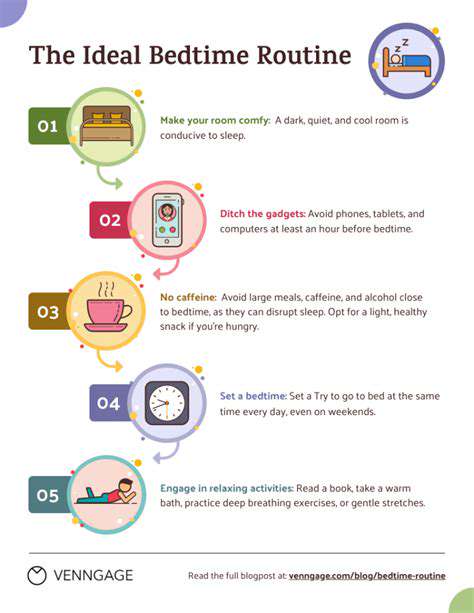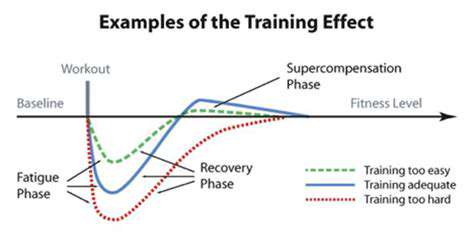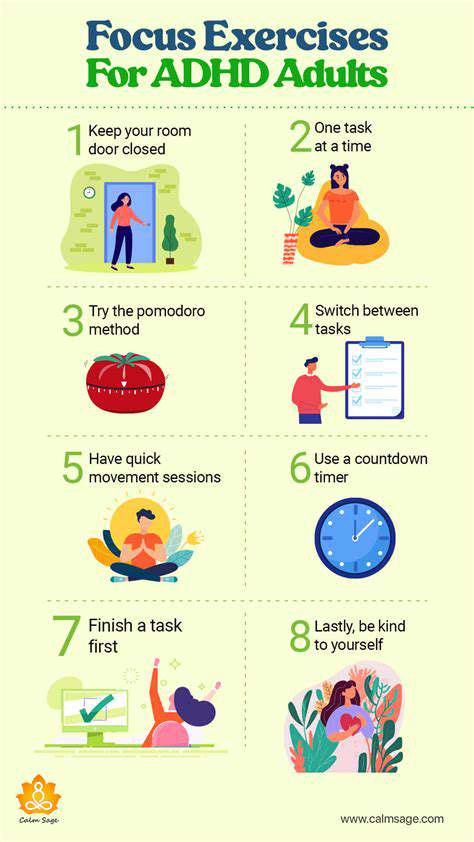How to Create a Healthy Environment for Sleep

Establishing a Consistent Schedule
Maintaining a regular bedtime routine plays a pivotal role in synchronizing your body's internal clock. This predictability helps your mind and body recognize when it's time to transition into sleep mode. While weekends might tempt you to stay up late, resisting this urge maintains your circadian rhythm's stability. Over time, this consistency leads to deeper, more restorative sleep that leaves you feeling refreshed each morning.
For families with children, structured bedtime rituals offer additional benefits. The familiar sequence of activities provides emotional security, reducing nighttime anxiety. Many parents find that maintaining this consistency significantly decreases bedtime resistance while fostering positive sleep associations that last into adulthood.
Relaxing Activities for Winding Down
Transitioning from daytime alertness to nighttime relaxation requires deliberate effort. Many sleep specialists recommend dedicating the final hour before bed to gentle, screen-free activities. Simple pleasures like reading physical books, knitting, or listening to acoustic music create the perfect bridge between wakefulness and sleep. The rhythmic nature of these activities naturally lowers both heart rate and blood pressure.
The environment plays an equally important role in this wind-down period. Dimming overhead lights and using table lamps with warm bulbs signals your brain to reduce alertness. Some people find that incorporating aromatherapy with lavender or chamomile enhances this calming atmosphere. The key is creating sensory cues that consistently tell your body it's time to prepare for restorative sleep.
Mindfulness and Meditation Practices
Contemporary life often leaves our minds racing even when our bodies need rest. Incorporating mindfulness techniques can effectively quiet this mental chatter. Basic breathing exercises, where you focus solely on inhaling for four counts and exhaling for six, provide immediate calming effects. Progressive muscle relaxation, systematically tensing and releasing each muscle group, offers another accessible entry point to mindfulness.
For those new to meditation, starting with just five minutes before bed can yield noticeable benefits. Many free apps offer guided sessions specifically designed for sleep preparation. The beauty of these practices lies in their flexibility - whether you prefer seated meditation, gentle yoga poses, or simply lying quietly, the goal remains cultivating present-moment awareness without judgment.
Creating a Conducive Sleep Environment
Transforming your bedroom into a sleep sanctuary requires attention to multiple factors. Temperature regulation proves particularly crucial, with most experts recommending 60-67°F (15-19°C) for optimal sleep conditions. Investing in quality bedding that suits your climate and sleeping position makes a profound difference in sleep quality. Memory foam pillows, for instance, can dramatically improve alignment for side sleepers.
Light pollution presents another common sleep disruptor worth addressing. Even small LED indicators on electronics can interfere with melatonin production. Strategic use of blackout curtains, sleep masks, and outlet covers creates the darkness your brain expects at night. Some people find that rearranging furniture to minimize electronic distractions further enhances their sleep environment's tranquility.
Dietary Considerations and Hydration
Nutritional choices significantly influence sleep architecture without most people realizing it. While avoiding caffeine after noon receives much attention, fewer recognize how meal timing affects sleep quality. Finishing dinner 2-3 hours before bedtime allows proper digestion while preventing reflux or discomfort that disrupts sleep. For those needing an evening snack, complex carbohydrates paired with tryptophan sources (like whole grain toast with almond butter) offer ideal sleep-supporting nutrition.
Hydration requires careful balancing - sufficient daytime water intake prevents nighttime thirst, while limiting fluids 1-2 hours before bed reduces disruptive bathroom trips. Herbal teas like chamomile or valerian root provide comforting hydration without caffeine's stimulating effects. Monitoring how different foods and beverages affect your sleep helps identify personal triggers and optimizers.
Optimizing Your Sleep Environment: A Conducive Space for Rest
Creating a Dark, Quiet Sanctuary
The quest for better sleep begins with environmental modifications. Light exposure management extends beyond simple darkness - the type of light matters significantly. Blue light from electronics particularly disrupts circadian rhythms, making amber-toned night lights preferable for necessary illumination. Sound management similarly requires nuance; while complete silence works for some, others sleep better with consistent white noise masking disruptive sounds.
Air quality deserves equal consideration, as proper ventilation prevents stuffiness that interrupts sleep. Strategically placed plants like snake plants or peace lilies naturally purify air while adding calming greenery. Humidity levels between 30-50% prevent dry airways that lead to nighttime waking. These elements combine to create an environment that actively supports rather than interferes with natural sleep processes.
Comfort and Ergonomics: A Supportive Sleep Setup
Mattress selection represents one of the most personal and impactful sleep investments. Beyond firmness preferences, proper spinal alignment should guide your choice. Side sleepers typically need softer surfaces to cushion shoulders and hips, while back sleepers often benefit from medium-firm support. Replacing mattresses every 7-10 years prevents degradation that subtly disrupts sleep quality over time.
Pillow selection requires similar individualization based on sleeping position and any neck issues. Down alternative pillows suit those wanting moldable support, while contoured memory foam options help maintain proper cervical alignment. Bedding materials also influence sleep - moisture-wicking fabrics like bamboo keep sleepers cool, while flannel provides cozy warmth in colder months. The cumulative effect of these choices creates a personalized sleep haven tailored to your unique needs.

Nourishing Your Body for Sleep: Diet and Exercise Tips
Prioritizing Sleep-Promoting Nutrients
Strategic nutrition choices powerfully influence sleep quality, though this connection often goes unrecognized. Magnesium-rich foods like pumpkin seeds and spinach support muscle relaxation and nervous system calm. Tart cherry juice naturally boosts melatonin production, while bananas provide both magnesium and potassium for muscle relaxation. These nutritional powerhouses work synergistically to prepare your body for rest.
Timing proves equally important as food choices. Eating tryptophan-containing foods with complex carbohydrates enhances their sleep-promoting effects. A small bowl of oatmeal with walnuts or a whole wheat cracker with turkey provides this ideal combination. Avoiding spicy or acidic foods close to bedtime prevents discomfort that could interrupt sleep, while small portions prevent overfullness that disrupts comfortable sleep positions.
The Power of Exercise for Better Sleep
Regular physical activity creates one of the most reliable foundations for quality sleep. Morning or afternoon workouts that elevate heart rate for sustained periods significantly deepen sleep later that night. Outdoor exercise offers the added benefit of natural light exposure, further reinforcing healthy circadian rhythms. The type of activity matters less than consistency - whether swimming, cycling, or dancing, regular movement promotes more restorative sleep.
Yoga and tai chi deserve special mention for their dual benefits - they provide physical activity while simultaneously teaching body awareness and relaxation techniques. These mindful movement practices often include breathing exercises that directly translate to bedtime relaxation routines. The key lies in finding enjoyable activities that become sustainable lifestyle habits rather than temporary fixes.
Hydration and Sleep: Staying Properly Nourished
Hydration affects sleep in ways many people don't anticipate. Mild dehydration can cause muscle cramps or restless legs that interrupt sleep, while excessive fluids lead to disruptive bathroom trips. Front-loading water intake earlier in the day prevents both scenarios, with a gradual tapering off in the evening. Monitoring urine color provides a simple hydration gauge - pale yellow indicates optimal levels.
Electrolyte balance also plays a role in sleep quality. Coconut water or electrolyte-enhanced beverages can help maintain this balance without the sugar content of sports drinks. Herbal teas like passionflower or lemon balm offer hydrating alternatives with natural calming properties. These nuanced approaches to hydration support uninterrupted sleep without sacrificing daily fluid needs.
Mindful Eating Habits for Better Sleep
Developing awareness around evening eating patterns can transform sleep quality. The practice of eating the rainbow - consuming diverse colorful fruits and vegetables - ensures broad-spectrum nutrients that support sleep biochemistry. Keeping a simple food-sleep journal helps identify personal triggers, whether it's dairy causing congestion or sugar creating energy spikes.
Establishing a last call for food 2-3 hours before bed allows proper digestion while preventing hunger pangs. For those needing something later, a small portion of complex carbohydrates with protein (like whole grain cereal with milk) satisfies without overstimulating. This balanced approach to evening nutrition creates ideal conditions for falling asleep easily and staying asleep through the night.
Timing Matters: Creating a Consistent Sleep Schedule
Our biological clocks thrive on predictability, making consistent sleep-wake times foundational for quality rest. Gradual 15-minute adjustments work best when shifting bedtime earlier, allowing natural adaptation without drastic change. Morning light exposure upon waking powerfully reinforces this rhythm, so opening curtains or stepping outside signals your brain to start the daily cycle.
The pre-sleep routine matters as much as the timing itself. Repeating the same sequence of calming activities (like brushing teeth, skincare, reading) creates powerful sleep associations. Keeping this routine under 30 minutes prevents it from becoming stressful rather than relaxing. Over time, this consistency trains both mind and body to transition smoothly into sleep each night.
Read more about How to Create a Healthy Environment for Sleep
Hot Recommendations
-
*Guide to Managing Gout Through Diet
-
*Best Habits for Financial Well being
-
*How to Build a Routine for Better Mental Health
-
*How to Eat Healthy on a Budget [Tips & Meal Ideas]
-
*Guide to Practicing Self Acceptance
-
*How to Incorporate More Movement Into Your Day
-
*Guide to Managing Chronic Pain Naturally
-
*Guide to Building a Reading Habit for Well being
-
*Top 5 Weight Loss Supplements That Actually Work
-
*Best Exercises for Postpartum Recovery [Beyond Abdominal Work]





![Best Snacks for Diabetics [Approved List]](/static/images/26/2025-05/HealthyFatsandComplexCarbohydrates.jpg)





